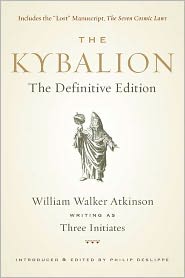* The New York Times carries a review of John Gray’s new book
The Immortalization Commission, commented on in a March 24 post here. The reviewer, Clancy Martin, professor of philosophy at the University of Missouri, Kansas City, mentions an incident in book concerning a visit to Russia by H.G. Wells:
Wells had proposed an ambitious program, in which “an intelligent few — scientists, engineers, aviators, commissars — could seize control of evolution and lead the species to a better future” and “eventually, humans would become like gods.” Wells’s great fantasies charged the batteries of mystically inclined intellectuals like Madame Blavatsky, G. I. Gurdjieff, P. D. Ouspensky and especially Gorky, a celebrated writer on friendly terms with Chekhov, Tolstoy and Lenin. Like Sidgwick before him, Gorky was convinced that the human personality, which he believed to produce “thought-energy,” was eternal, and essentially interwoven with the fabric of the universe. Unlike Sidgwick, Gorky believed that humans could evolve into “gods” and eventually influence the development of the universe itself — a notion that gave birth to a pre-revolutionary movement called “God-building.” “A kind of secular mystery cult, God-building was another part of the late-19th-century European current in which occultism and science marched hand in hand,” Gray writes.
“Mystically inclined intellectuals like Madame Blavatsky”! An online version of the May 6 post, “The Scientific Revolt Against Death,” can be read
here.
* V. Narayan Swami who posts the blog, Rabbiting On, takes us to task for pointing out some errors in a 2008 post by him mentioning Hudleston’s Garden, the Madras property purchased by Olcott and Blavatsky in 1882 as headquarters for the Theosophical Society. His comments are served up with a good dose of mockery and attempted sarcasm.
“What makes Theosophists come down from the supposedly high ground which they occupy to take issue with an obscure blogger,” he writes in his self-justifying post of May 3, though admitting that we were correct in at least one instance!
In regard the property he describes as Hudleston’s Garden, we must agree to disagree: the building he indicates it to be has two stories with rooms on the top, while Hudleston’s Garden (at least when the Theosophists bought it) was a one story building with rooms on the roof. In response to our query as to what happened to these buildings, for there is no indication of them at present on the property owned by the Theosophical Society, he coolly says:
“I consider them to be buildings outside the estate and on the other side of the Elphinstone bridge,” though not stating so in his original post.
And if the artist could take such liberties (the point of “The Indian Picturesque: Images of India in British Landscape Painting, 1780-1880,” in C.A. Bayly’s
An Illustrated History of Modern India, Oxford University Press, New Delhi, 1991, how European landscape artists manipulated the portrayal of India), could he not imagine other structures? Since, as V. Narayan Swami says:
“the centerpiece of my [his] blog story” was
“my [his] attribution of Hudleston House,” we can understand the difficulty of his position, for the validity of any other viewpoint would be impossible. As Blavatsky News is an attempt to share the collected research of those who post here, made possible by the global contribution of our readers, we commend any attempt to decipher this intricate field, and V. Narayan Swami’s entry into the murky waters of Theosophical history can be read
here. For us, it is not so much about the building but what happened there.


